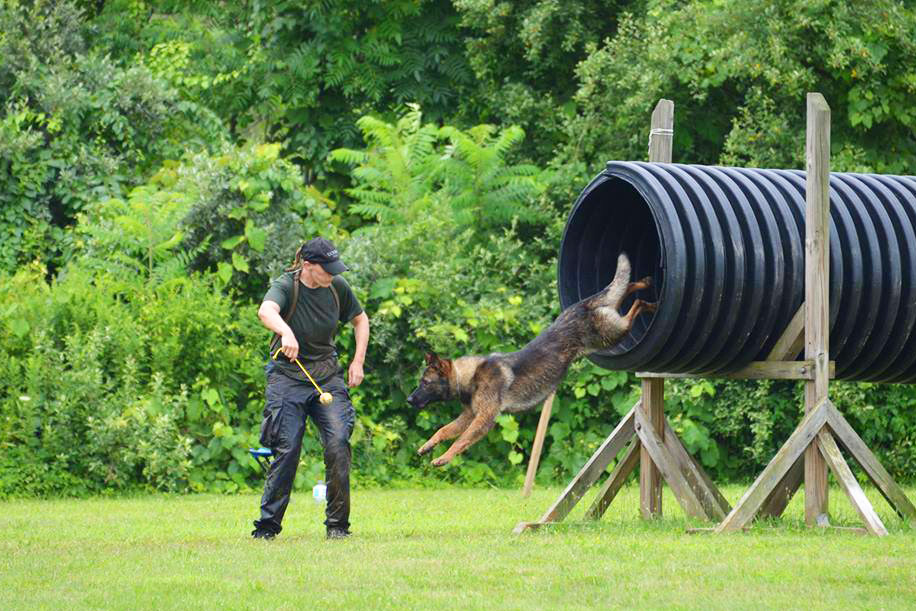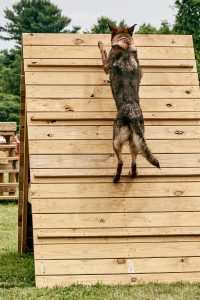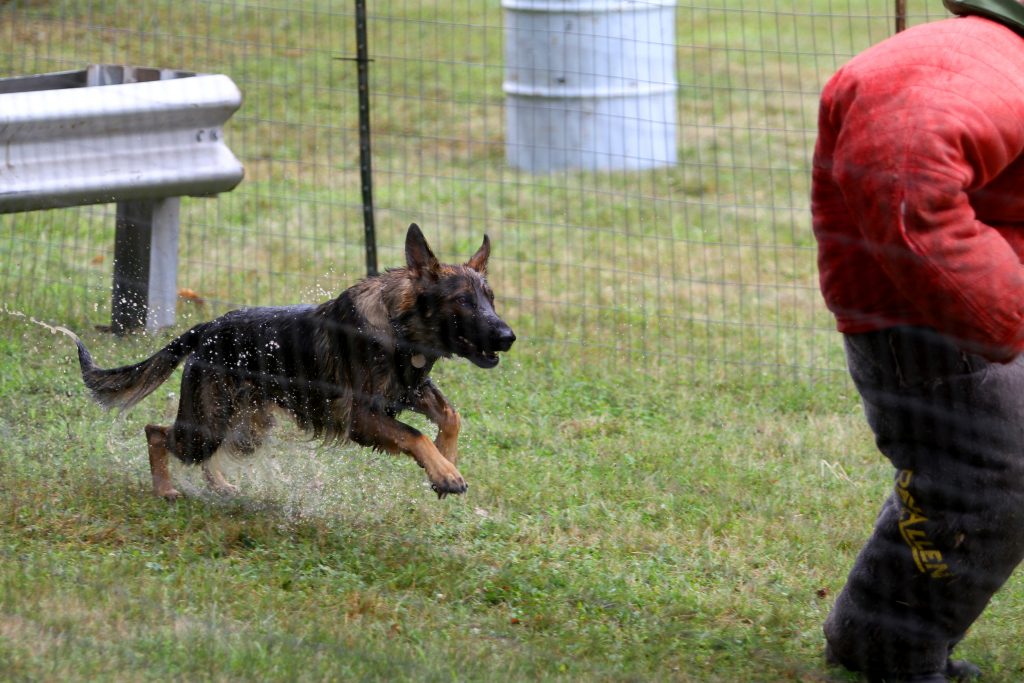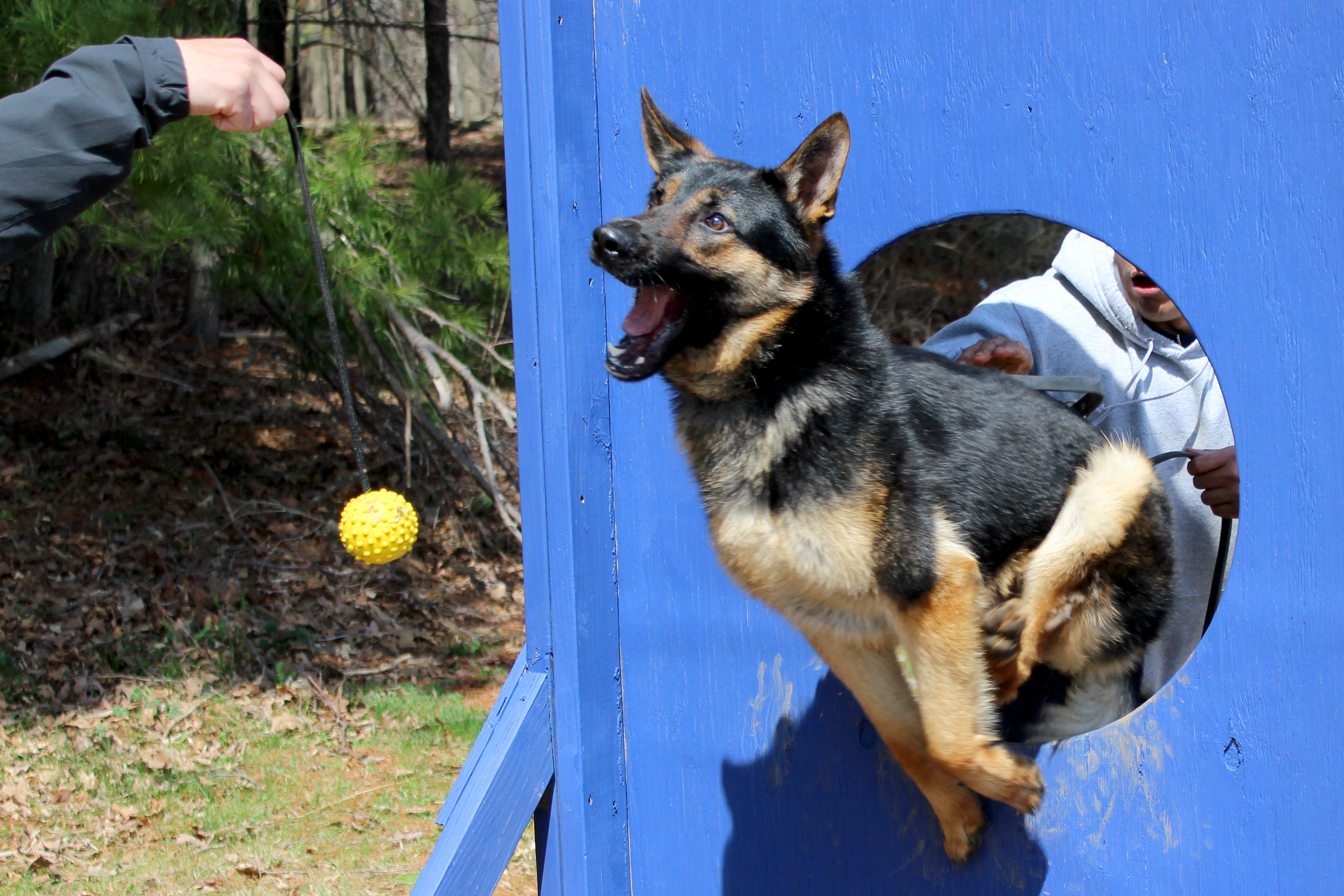Who is the most recognizable dog on the UConn campus?
The first thought that comes to mind for many is the beloved Husky mascot Jonathan – and with good reason, for the widespread attention he has gotten over the years.

But what about Blaze, Ranger, and Harper? ‘Who?’ you might say?
These three German shepherds are valuable K-9 members of the UConn Police Department, and are instrumental in a number of areas of law enforcement.
Blaze works with Officer Lindsey Gionfriddo, Ranger with Officer Jonathan Santiago, and Harper, the veteran of the group with four years of service, with Officer Michael Rhodes.
UConn has had police dogs on the force since 1989, but now with three on campus, there are dogs available every day of the week and essentially 24 hours a day.
Rigorous training
Blaze and Ranger, along with their officers, went through 15 weeks of rigorous training through the Connecticut State Police Academy in Meriden, graduating from the program in early July.

The officers are too modest to talk about it, but the program is physically and mentally challenging for dog and human alike.
The dogs are bred for police and service work. They actually came from the Czech Republic, and were brought to Connecticut Canine Services in Bethany before being selected for the Academy.
Police dogs perform a number of different tasks, such as tracking for lost people, narcotics control (Harper is trained to do that), and evidence recovery. They are also very useful as a deterrent, and serve as goodwill ambassadors to the community.
“The dogs can serve as a bridge between the police and the public,” says Rhodes, who has been a member of the UConn Police since 2004. “We have them at public events and over at the Student Union. People are naturally curious about them and ask a ton of questions.”
The police dogs know when it’s time to go to work and get a job done.
“When we are in the cruiser and the signal lights and siren goes on, Harper knows it’s time to go to work,” says Rhodes. “The dogs pick up on the emotions of the officer, so they know if there’s tension or nervousness.”
In addition to their duties on the UConn campus, both the dogs and the officers are often called upon by neighboring municipal and State Police troops for assistance – usually on short notice.
Part of the family
Like most animals and their masters, the bond between dog and officer is a strong and personal one. Not only do they spend their work shifts together, but when the officer goes home, the dog goes along too.

“They become like a regular family dog at home. They need their down time,” says Gionfriddo, a UConn police officer since 2010. “I’ve got two small kids at home, and they love him. He’s like a giant puppy who is into everything.”
Hard work on campus and plenty of fun at home results in a big appetite for the trio. Each dog consumes between four and six cups of food a day, with Ranger, the youngster of the group, being the biggest eater.
“He can eat a lot, an awful lot,” smiles Santiago, a UConn officer since 2014.
Graduation is not the end of training for police dogs and officers, as they are constantly learning about new issues and are recertified two to three times a year.
The UConn officers and dogs are also annual participants in a rite of summer of the Storrs campus – the Connecticut Police K-9 Olympics.
Police dogs usually work until they are about eight to nine years old, and then enjoy a well-deserved retirement – oftentimes at the home of the police officer they have worked with. Former UConn police dogs are remembered in a display of photographs at the UConn Police Station.



